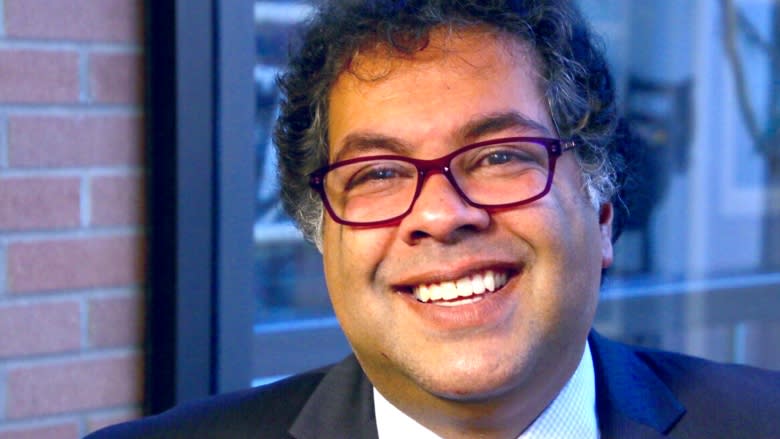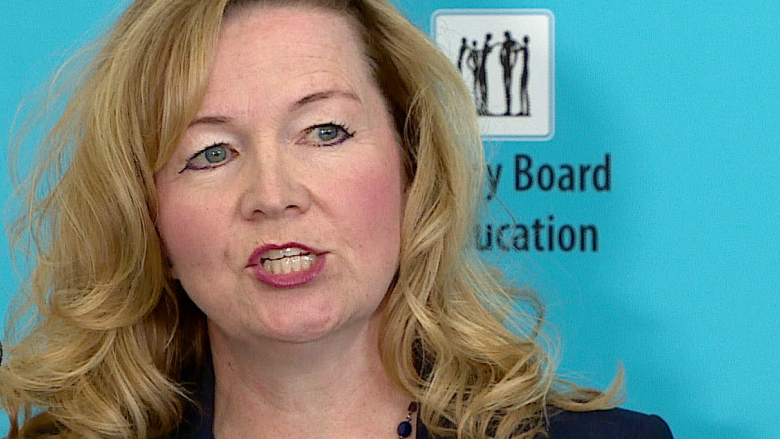What got funded in Calgary and what didn't in the Alberta budget
There's lots of spending for Calgary in Alberta's new budget, including money for new schools and a long-term care facility.
The city will receive money for five new schools and presumably a chunk of funding set aside to modernize older schools across Alberta, but the province will announce more details next week.
"We are anxiously awaiting what that would look like," said Calgary Board of Education chair Joy Bowen-Eyre, adding that the board has put forward a list of their priorities.
Calgary's Catholic school board also has its own priorities for new schools.
Over the next four years, the province has promised to fund 24 new and modernized schools in Alberta.
University of Calgary funding
The University of Calgary's MacKimmie building will get $292 million over the next four years to accommodate the nursing and social work faculties. That's on top of $52 million earmarked for the new Schulich School of Engineering building.
"As we look towards the next 50 years, capital investments — such as the MacKimmie Complex and Schulich School — will play an integral role in helping provide sustainable, quality teaching, learning and research as well as needed space for our students," said president Elizabeth Cannon in a press release.
University students across the province will also see tuition remain frozen for the 2017-2018 year, which was previously announced.
Millions for zoo, WinSport, health-care projects
Another $6 million over two years is earmarked for Calgary Zoo expansion in the 2017 budget, although $10 million was announced last year. The province says the funding has been given out in three different years:
- 2016-17: $3.4 million
- 2017-18: $3.3 million
- 2018-19: $3.3 million
Also planned is a $10-million sliding track refurbishment at Calgary's not-for-profit WinSport, which will include a refrigeration cover and bringing the track up to safety standards.
There's also money for two major health-care projects.
Calgary will see the construction of a new 200-bed, long-term care facility at the cost of $131 million.
Also included in the budget is $1.19 billion over four years for the cancer centre, which is to be built adjacent to the Foothills hospital in northwest Calgary.
Money for Calgary's roads
Spending on the southwest ring road project really gets going this budget with $382 million this year and a total of $1.7 billion over four years.
A few more Calgary roads projects are short on detail right now, including a new interchange planned for Deerfoot Trail at 212th Avenue S.E.
"We need to have that finished for the Cranston community to be fully built out," said Coun. Shane Keating, adding that the route is also an important second access for South Health Campus. "[There's] fairly large congestion problems."
The province is also "in discussion" with federal government and the city on building a road in northeast Calgary linking Airport Trail to Stoney Trail.
No Green Line announcement
Calgary Mayor Naheed Nenshi said while there is no specific mention of funding for a LRT line running from the north end of the city to the deep southeast, he's still hopeful the Green Line is on the province's radar.
"I know they're waiting on the City of Calgary to continue and complete our design questions and our basic budget. So actually, that one, I'm going to let 'em off the hook on for now," he said.
"There is more than $1 billion set aside from the carbon levy that is specifically for transit funding. We have to assume that is for a Green Line and Edmonton LRT."
However, Nenshi says he's disappointed there is nothing in the provincial budget to help municipalities deal with the cost of the carbon tax, which could cost the City of Calgary about $6 million a year.
Funding 'gap' inside Calgary schools
At the Calgary Board of Education, chair Bowen-Eyre is concerned about what she calls a $38.4 million gap in operational funding.
"Even with funding for enrolment growth, we will still have a gap between the amount we receive, and the amount necessary to maintain current educational service levels for our students," she said.
"There will have to be a review across our system to see where we could find some efficiencies and some savings and that could affect schools and classrooms."
A provincial plan to eliminate busing costs will only help one in four bus riders at the CBE, Bowen-Eyre said. Only students attending their designated community school and living more than 2.4 kilometres away from the school are eligible.
Students attending the school board's popular alternative programs are not.
"We would have to make decisions on whether we would have to increase fees to get those students there or whether we would have to reduce the service level or whether we would even be providing service at all," she said.


